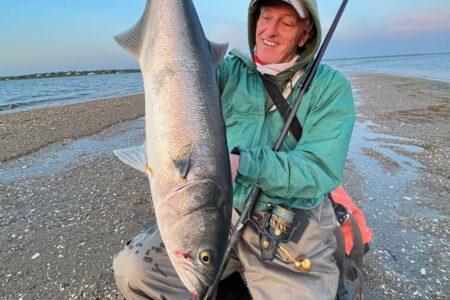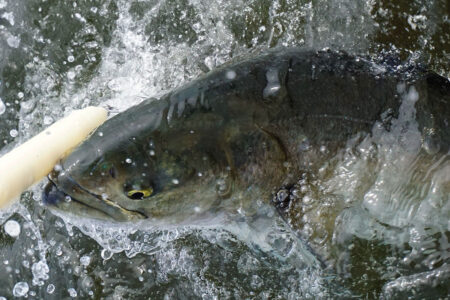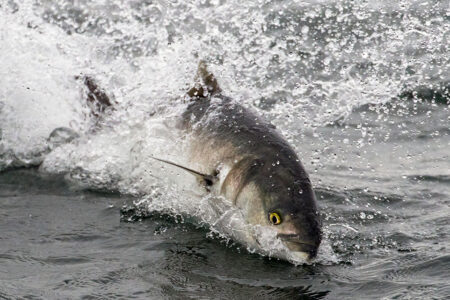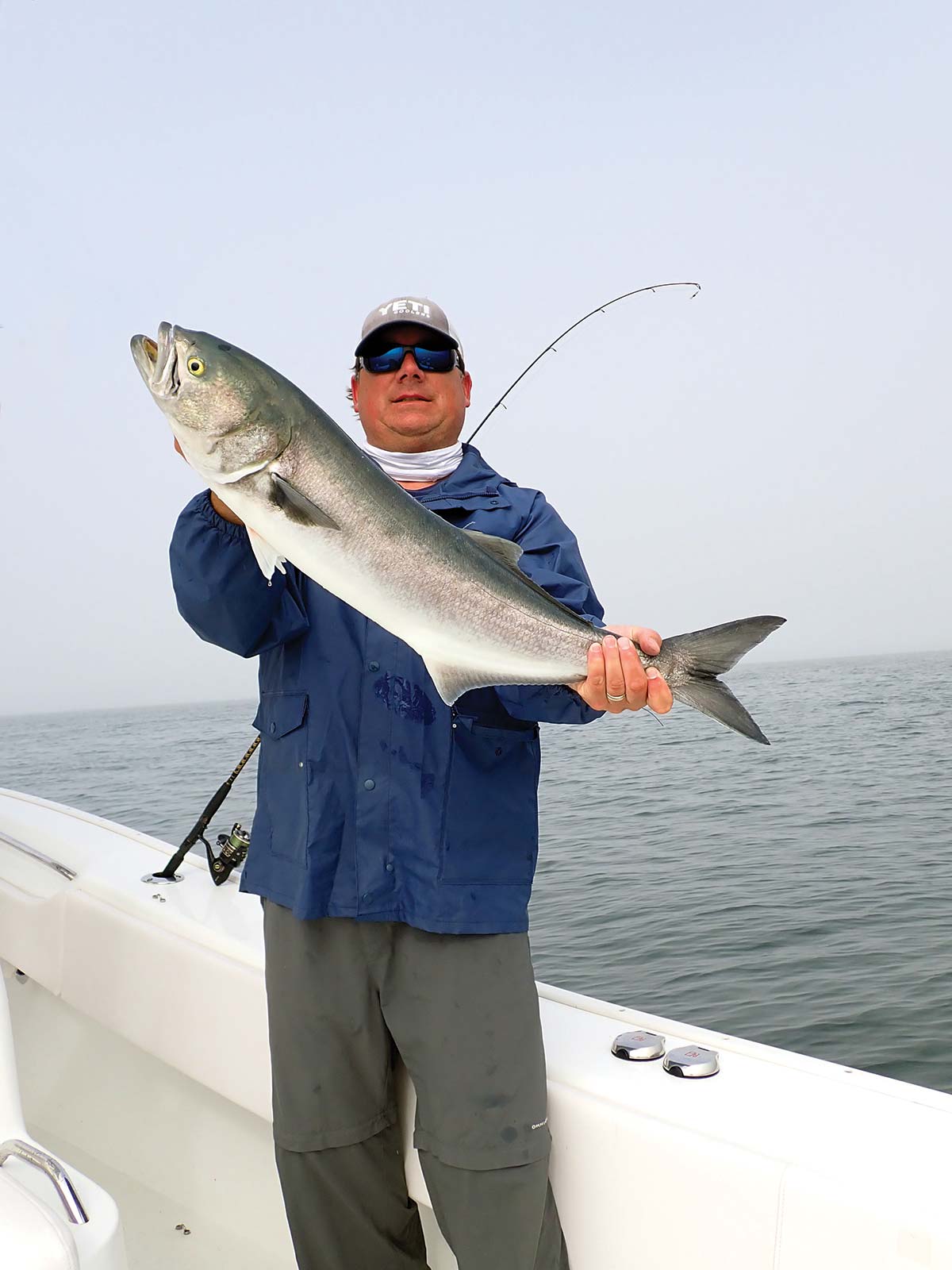
The spring invasion of “racer blues” can provide some of the best topwater action of the season.
Whether you refer to them as choppers, yellow-eyed demons or just plain bluefish, these fish are probably responsible for getting more people addicted to fishing in our area than any other species. When I first started to fish, it was bluefish that sent me home smiling. I’m not ashamed to admit that it took me two years to catch my first bass. If bluefish didn’t swim in our waters I doubt you would be reading this article. Simply put – bluefish are responsible for my wonderful addiction to the world of saltwater fishing and sharing my experience with others.
The bluefish bag limit was reduced to three fish last year, down from 15 the prior season, and some people were upset by the new regulations. Unfortunately, the memory of seeing bluefish brought back to the dock only to be thrown in a dumpster is still fresh in my mind. I fish the South Shore waters of Long Island, and I have witnessed a definite decline in the number of blues in these waters. During the last three fall seasons, they have been virtually nonexistent, although there continues to be a decent showing of fish in May and June. Let’s hope these new regulations help rebuild the stock so that bluefish return to our waters in the numbers we once knew.
If you are going to target bluefish, or there is a chance that you may catch them as by-catch, be sure you have the right tools. A good pair of pliers is a must – putting your hands anywhere near the mouth of a blue is a no-no. A de-hooker is probably one of the most valuable and underutilized fishing tools that you can buy. I consider it a necessity, and they only cost about ten bucks. Doing without one could result in a trip to the ER for some stitches, as several of my friends can attest. On the flip side, the one tool that I would never use, only because I have learned the hard way, is a net. Big bluefish have the ability to destroy your net, and along with the holes, hooks will get tangled in the webbing, complicating the unhooking and release process.
What makes bluefish such an exciting gamefish and contributes to their popularity with anglers, is their appetite. Quite often you will catch a bluefish that has a bloated stomach and is in the process of swallowing another prey while inhaling your lure. Over 70 species of fish/crustaceans have been found in their stomach contents. Everything from butterfish to sea robins to lobster. The bottom line is if you can find them, you can usually get them to eat.
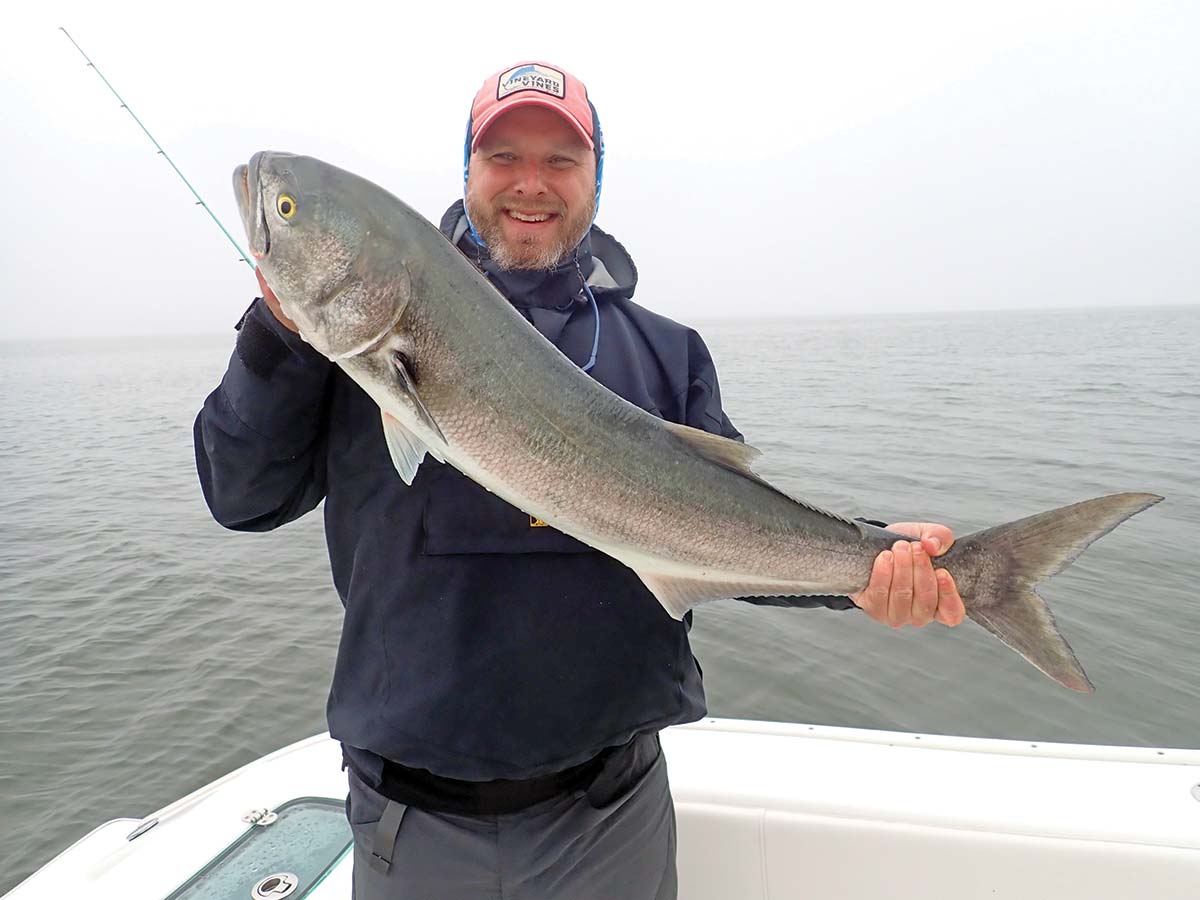
Pop It!
I spend a lot of money on fishing lures. I chase bluefish to tuna and just about everything in-between. However when it comes to bluefish this is the one fish that is easy to please when it comes to plug selection. Year in and year out, my go to lure is 6-inch Cotton Cordell Pencil Popper. It weighs 1-ounce and retails for anywhere from $6.50 to $8.50. Due to its shape, you can heave it a good distance, even with 30 to 40-pound braid. I enjoy light tackle fishing but I have my limits on just how light I’ll go when targeting bluefish. I can assure you it won’t be the same outfit I use for weakfish. Whether I’m popping, jigging or live-lining, my reel of choice is a Shimano Saragosa 5000 mounted on a St. Croix medium power 7-footer with a moderate-fast action. The rod is designed for ½ to 2-ounce lures.
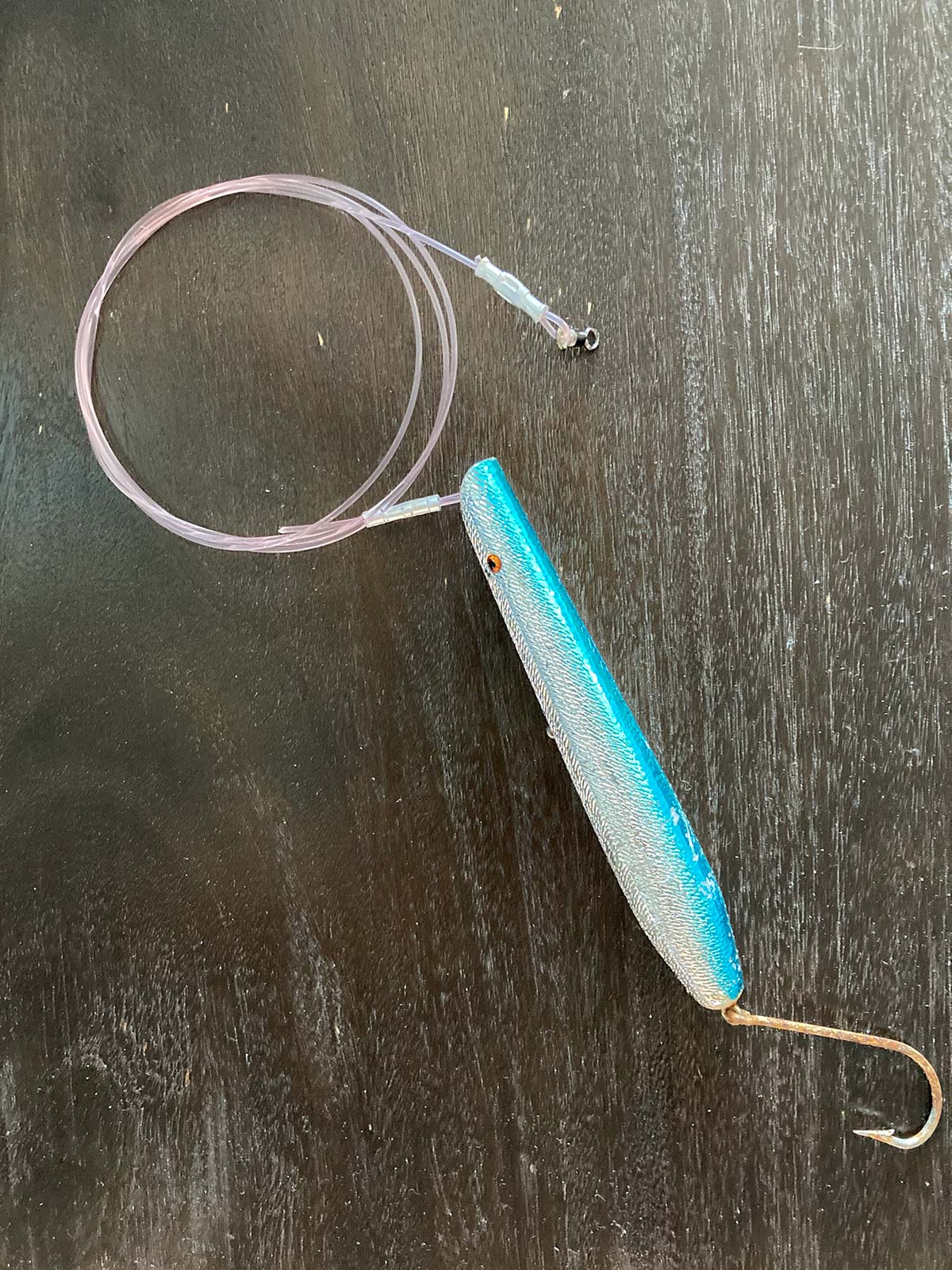
Here is where my gear differs from most fishermen. I use a very heavy 2-foot long leader – heavy as in 200-pound test. No that is not a typo, I meant 200 pounds. Since I started to use that heavy leader, I haven’t lost one popper, and I only use it when popping for bluefish. If you are wondering why I don’t use wire, it’s because it can cut through you like a hot knife going through butter. It’s like getting a cut from braid times ten. Keep in mind this leader is never inside the eyes on my rod so it doesn’t cut down on casting distance. The leader is crimped to the popper, and the other end is crimped to a swivel that connects to the main line. If you enjoy mixing up your popper arsenal, instead of crimping the lure directly to the leader, you can use a Tactical Angler power clip which will allow for quick lure changes.
There are advantages to using such a heavy leader, aside from having to replace lures. First, it is very easy on the hands when grabbing it to land a fish. It allows you to lift the bluefish up and release it with a de-hooker. You never have to worry about the leader breaking, and the less you handle the fish the better chance it will have to survive. Also, it’s wonderful not having a bluefish flopping around and making a mess of the deck. Another reason for the heavy leader is because bluefish are like piranhas when they are on the feed. If you have been “broken off” while fighting a bluefish, there is a good chance that another bluefish tried to eat what was hanging out of your hooked blue’s mouth. The heavy leader may get nicked up, but it should take a good licking before you need to change it out. If you use a 40-pound leader, it might be one and done. As for color, I like to use anything with silver on the bottom, and I also like all black. The Cotton Cordell comes with two treble hooks. I remove both and just use a single J-hook on the tail. Treble hooks and bluefish are a very dangerous recipe and the single J-hook will give you a solid hook-up, and makes unhooking safe and easy.
I have caught bluefish on poppers around rips, in the middle of bays, along ocean beaches and even 20 miles offshore. However, my favorite place to target them is in very shallow water in back bays. I’m talking 2 to 3-feet deep – water so skinny that my fish finder blacks out. Please keep in mind I’m creeping into these areas with my engine props just barely under the surface. Once I confirm that there are fish in the area, I shut down the engines. It’s best to be quiet. Lucky for me, where I fish is mostly sandy/muddy bottom, so bumping bottom shouldn’t lead to any damage.
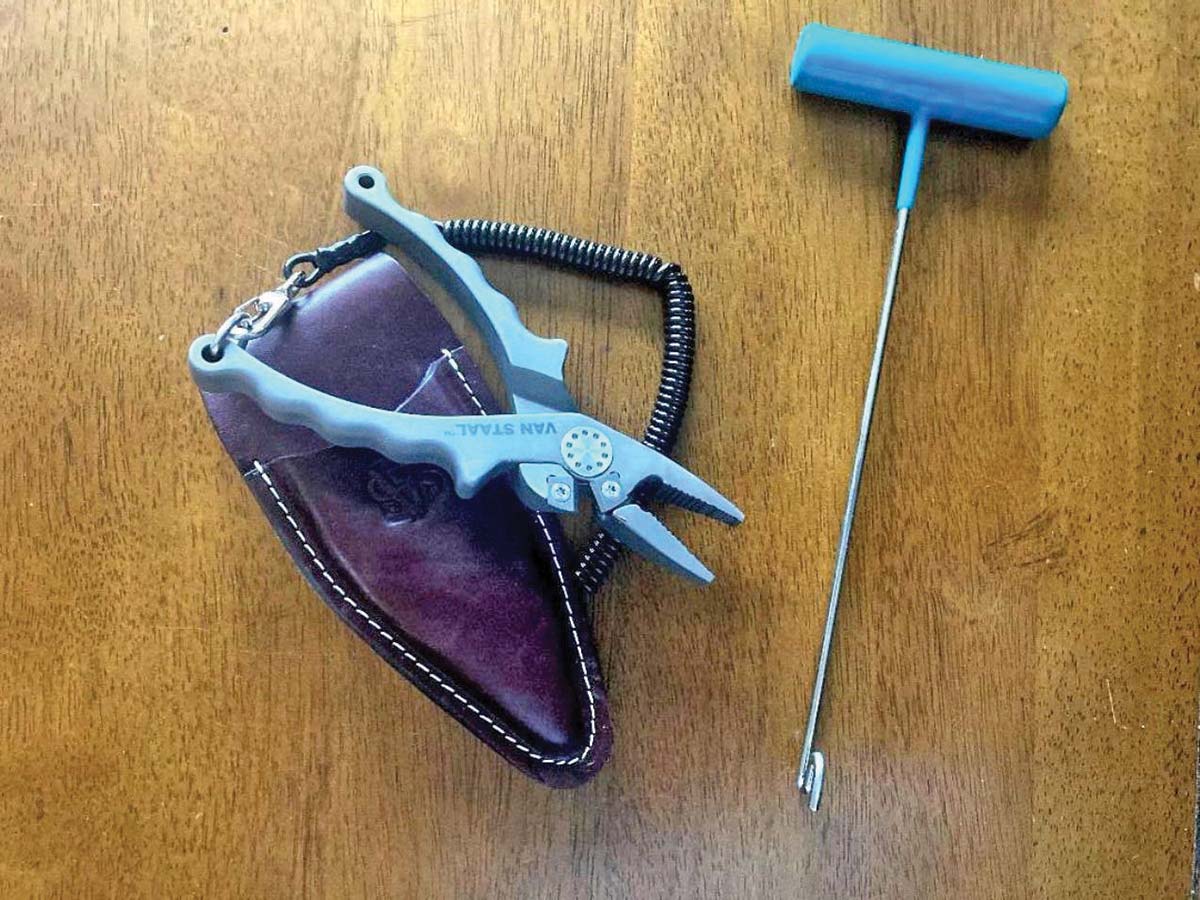
During the spring, these toothy critters begin to filter into many of the bays that dot the Northeast Coast. The fish that enter in the spring are often what are referred to as “racers.” They are long and lean with big heads. They supposedly “race” in from offshore to fatten up their bellies, and lots of these fish are between 8 and 14 pounds. While it is common to find fish blitzing on the surface, I often find them when there aren’t any of the usual signs that get your heart racing. On occasion, you will see tails sticking out of the water because they are in such shallow water. Most of the time I find them by blind casting along back bay shore lines. I’ll make five or six casts before I move on, stopping about every quarter mile.
That first initial blow up signifying that you found them is always the best. Though I’m anticipating something happening, when it does it is always exciting. Bluefish are a schooling fish so that first fish that explodes on your popper will likely not be alone. Mark the spot and just continue to drift and cast. When the bite stops go right back to where you started. I know these fish aren’t spawning because that takes place offshore. Why they school up in 2-3 feet of water I have no idea. They seem to be feeding with their faces in the mud. They remind me of a pig looking for a truffle. Once you find where they are, quite often they may remain in that area for a week or more. As I mentioned, I throw the same plug over and over. I fish with guys that change their lures all day long. They spend more time with their noses in their tackle bags/boxes than they do with a line in the water. Better to keep things simple.
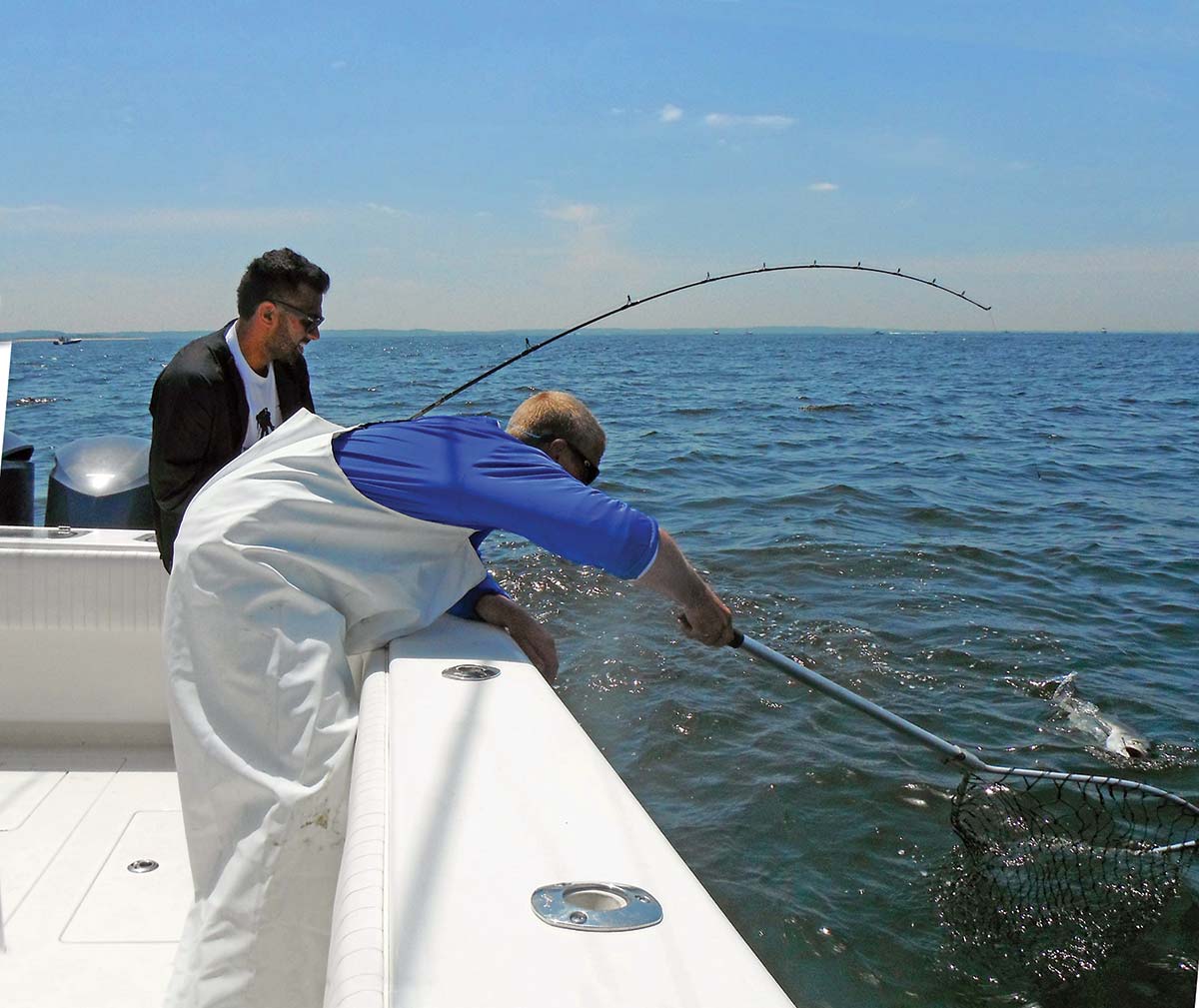
I’ll end this article talking about a little common courtesy. Last year we had a tremendous amount of fog up and down the Northeast Coast. It didn’t matter if you were inshore or offshore. It seemed like it was everywhere. Dealing with fog can be very stressful, however it can also help you hide. Several times during May and June last year, the fog was so thick and I was so shallow that all the boats passing me had no idea that I was catching big blue after big blue up against the shoreline because they couldn’t see me. However once the fog would lift, passing boats would be curious as to what we were doing. Once they saw us catching fish they began to move closer to us. The crazy part is these fish were spread out. There was no need to be within 200 yards of another boat. When you have two boats close together, it doesn’t take long before you are too close together to get off a proper cast, and the more spread out you are, the less likely you are to attract other boats. Also, the more boats you have concentrated in a small area, the more likely you are to spook fish in shallow water. So spend some time probing these bay waters and you might be pleasantly surprised by what you find.
